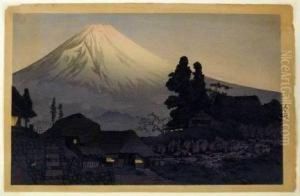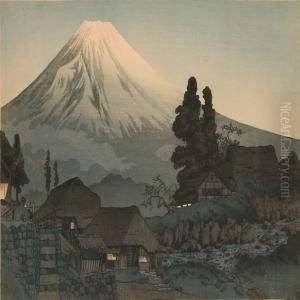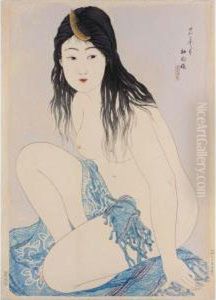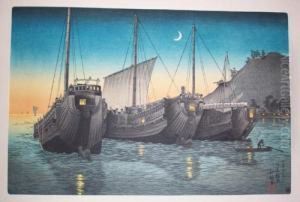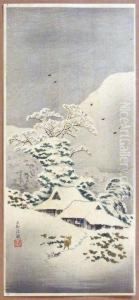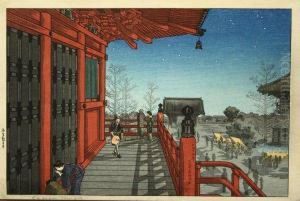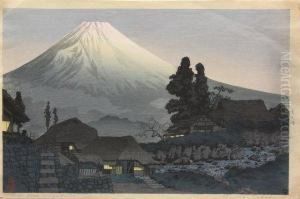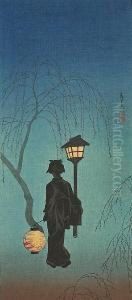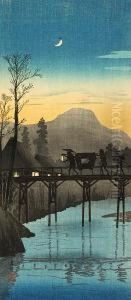Takahashi Shotei Paintings
Takahashi Shotei, also known as Hiroaki Takahashi, was a prominent Japanese artist known for his woodblock prints, particularly in the Shin-Hanga style, which sought to revive the traditional ukiyo-e art movement by integrating Western elements and perspectives. Born on September 2, 1871, in Asakusa, Tokyo, Shotei was initially given the name Matsutani Tadaaki. From a young age, he displayed a keen interest in art and was eventually apprenticed to the ukiyo-e artist, Aoki Kyoji, at the age of sixteen.
Shotei’s early work was primarily in illustrations for books and magazines, which was a common avenue for artists to earn a living during that time. In 1907, he joined Watanabe Shozaburo, a publisher who played a significant role in the development of the Shin-Hanga movement. Shotei became one of the first artists to produce prints for Watanabe, contributing to the rejuvenation of the woodblock print tradition in Japan with his landscapes and depictions of everyday life.
The Great Kanto Earthquake of 1923 destroyed Watanabe's print shop, along with many of Shotei's woodblocks. Despite this setback, Shotei continued to create new designs and was instrumental in rebuilding the Shin-Hanga collection. His work is characterized by a blend of traditional Japanese techniques with atmospheric effects, innovative compositions, and a focus on light and shadow, often showcasing scenes of rural life, nature, and the changing seasons.
Takahashi Shotei's career was cut short by World War II. He was in Hiroshima during the atomic bombing on August 6, 1945, and died from the effects of the blast. Despite the tragic end, Shotei's legacy lives on through his extensive body of work, which continues to be celebrated for its beauty and contribution to the art of Japanese woodblock prints.
